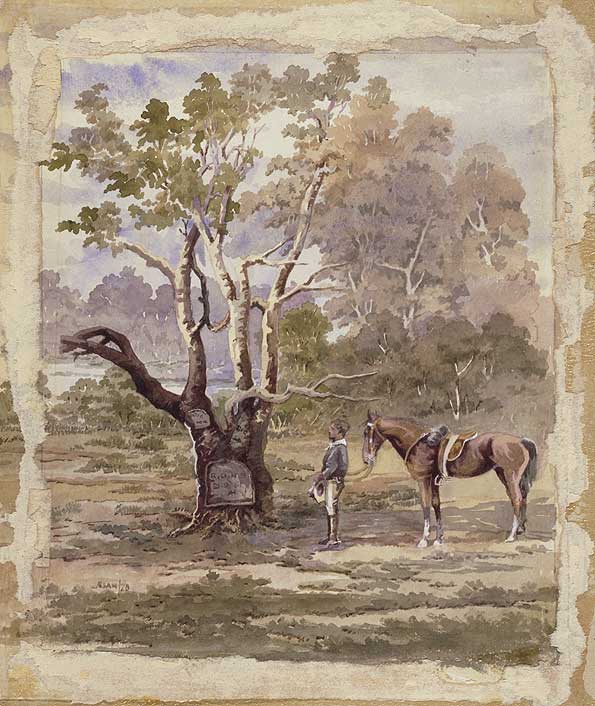 The 'Dig' tree in 1878
The 'Dig' tree in 1878
TLF ID R3036
This is a watercolour by Arthur Esam (1850-1938), created in 1878 and measuring a modest 32.5 cm x 26.7 cm. It shows a coolibah tree with two sections of bark missing - the famous 'Dig' tree of the Burke and Wills Expedition of 1861. A man (perhaps Esam himself) is standing holding the reins of a horse, and appears to be studying the tree.
